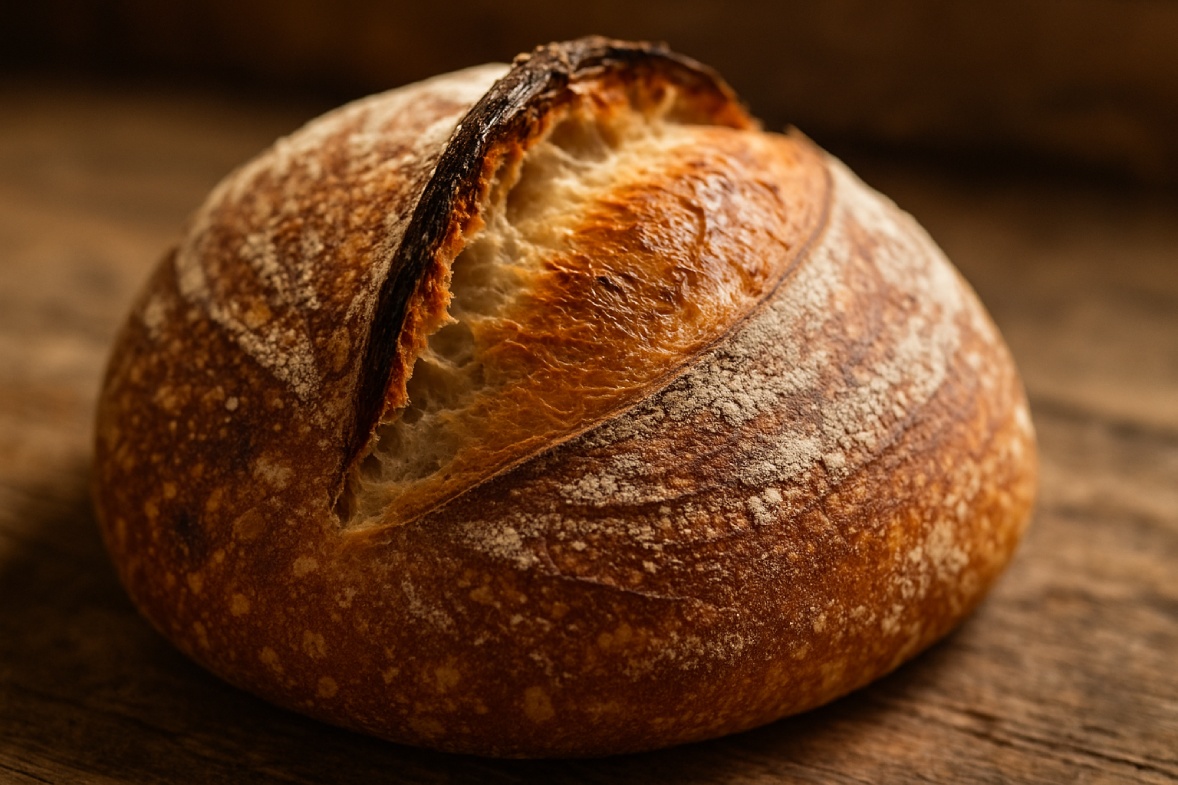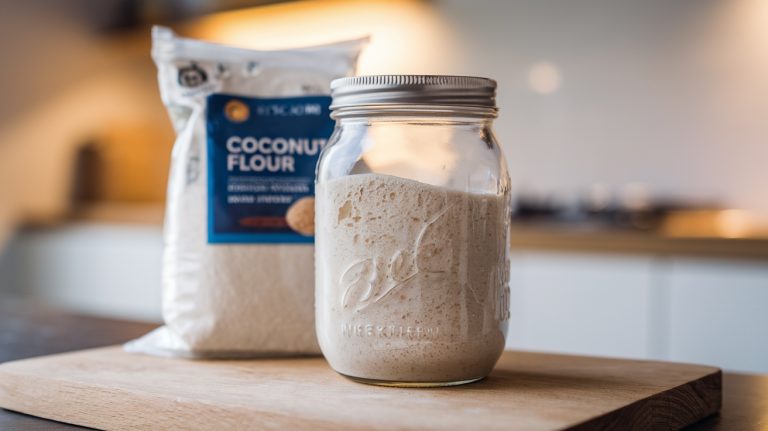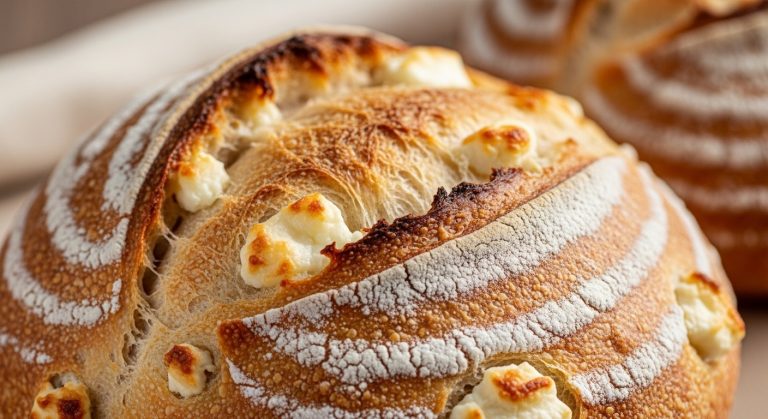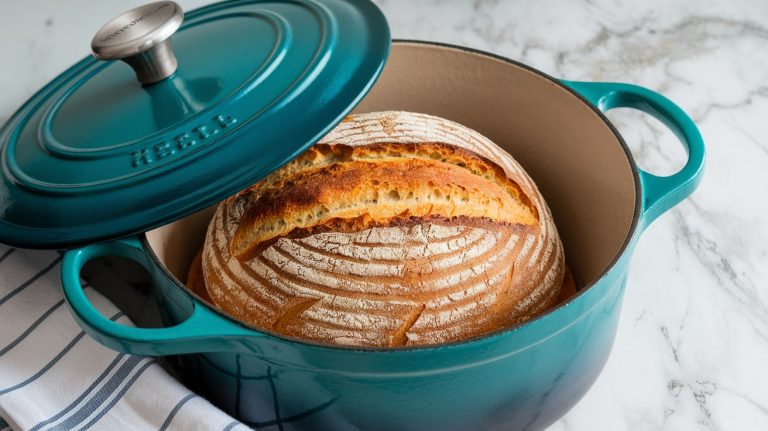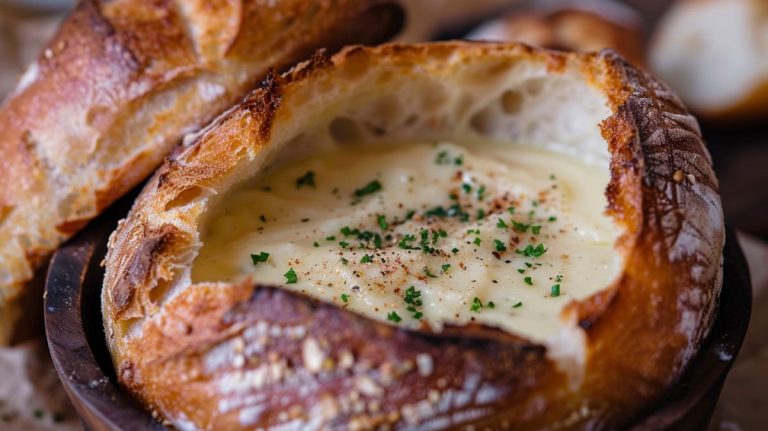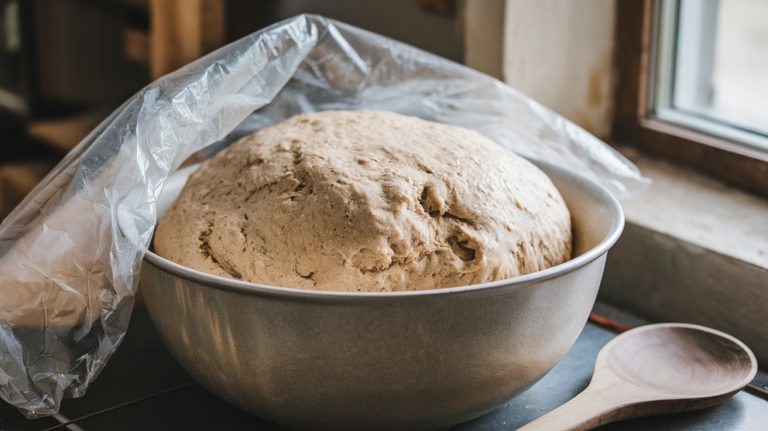Sourdough Bread Ear: Bake Your Signature Masterpiece
If you’re chasing that perfect sourdough bread ear, you’re after a caramelized, crispy flap that screams baking mastery. It forms from precise scoring and intense oven spring, where fermentation gases burst through a shallow, angled cut.
Build taut surface tension with tight shaping, ferment just right, and bake with steam in a scorching oven. Nail these, and your loaf will sing. Stick around to uncover more secrets for that stunning ear.
Key Takeaways
- A sourdough ear is a caramelized crust flap, showcasing baking skill and fermentation mastery.
- It forms during oven spring as gases expand through shallow, angled score lines.
- Proper fermentation and tight shaping build surface tension for ideal ear development.
- Scoring at a 45° angle, about 1 cm deep, ensures controlled expansion.
- Baking with steam in a hot oven maximizes rise and crust formation.
Understanding the Sourdough Ear
The sourdough ear—a striking flap of crust that’s a hallmark of skill. You’ll notice it as a darker, caramelized edge, crunchy and packed with flavor from the Maillard reaction.
Dive into sourdough artistry and marvel at the sourdough ear—a caramelized, crunchy testament to skill and the Maillard reaction’s flavorful magic!
It’s not just pretty; it signals your mastery of fermentation and dough tension, reflecting proper gas production and structure. Scoring plays a crucial role in achieving this feature, as it allows for controlled expansion during baking for that perfect ear. controlled expansion
When you craft your loaf, remember that ears form at scored weak points, showcasing your precision. They’re the identity of artisanal sourdough, though their consistency can challenge you due to fermentation’s unpredictability. A well-executed cut at a 30-45 degree angle ensures optimal expansion and ear formation.
Aim for that ideal size and shape—it’s a reflection of balanced techniques.
How the Ear Forms During Baking?
As you slide your sourdough into the blazing oven, magic unfolds in those first critical minutes. The intense heat triggers oven spring, a rapid expansion as fermentation gases swell, pushing the dough upward through your carefully scored line.
That shallow, angled cut—ideally 15-30 degrees—creates a delicate flap, peeling back under pressure to form the iconic ear, anchored at each end. Achieving this perfect ear also depends on using the right tools, like a high-quality bread knife for precise scoring before baking.
Your dough’s taut surface tension, built through precise shaping, traps those expanding gases, focusing the burst at the score. A strong gluten network guarantees it stretches without tearing, while steam keeps the surface pliable, maximizing rise before the crust sets. Proper bulk fermentation ensures the dough has enough strength for this oven spring burst.
Key Factors for Perfect Ear Development
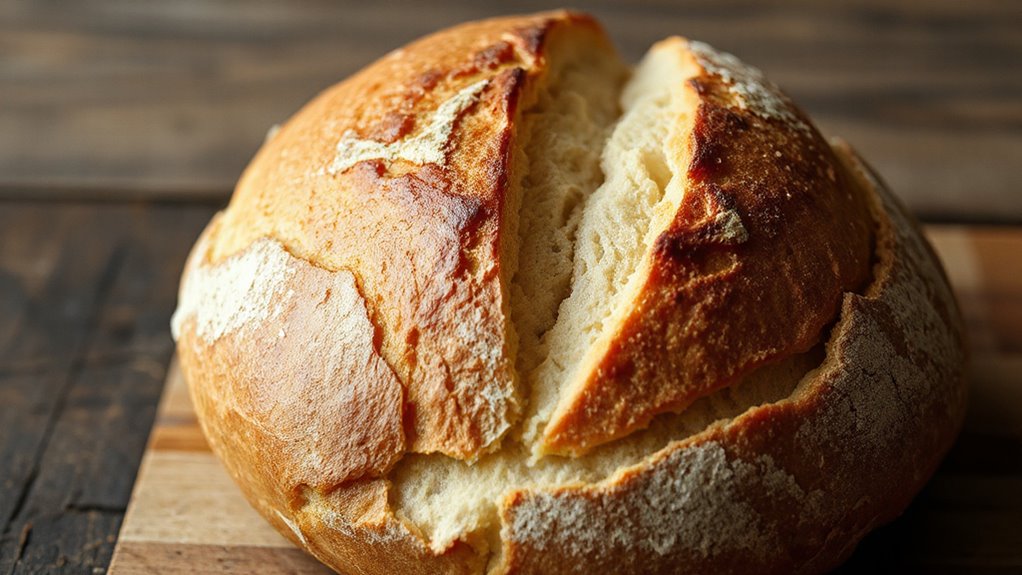
While the magic of sourdough bread lies in its rustic charm, crafting the perfect ear demands precision and a deep understanding of key factors. You’ve gotta nail proper fermentation—ensure your starter doubles with regular feeding and let the dough bulk ferment at room temperature for 4-6 hours until it doubles.
Build surface tension through strategic stretch and folds, shaping tightly, and a long cold ferment. Additionally, a long cold ferment helps develop a skin on the dough, enhancing surface tension. Preheat your Dutch oven to ensure a steamy environment that supports oven spring and ear development.
Master surface tension with deliberate stretch and folds, tight shaping, and a patient cold ferment for that perfect sourdough structure.
Don’t skimp on scoring; use a sharp blade with the right angle and depth for controlled expansion. Create a steamy baking environment to keep the dough pliable for maximum oven spring and a crispy crust.
Balance hydration and strengthen your dough with folds to retain gas and achieve that coveted ear.
Common Challenges in Ear Formation
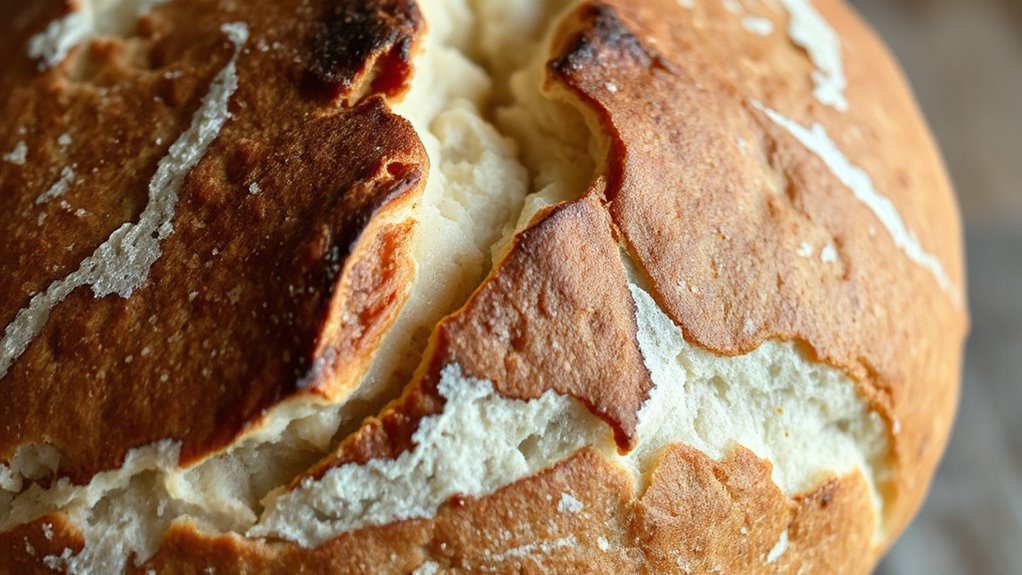
If you’re chasing that perfect sourdough ear, brace yourself for a few hurdles along the way. Insufficient fermentation can sabotage oven spring, leaving your loaf flat and earless.
Poor gluten development weakens structure, while inadequate steam stifles crust formation—both vital for that coveted ear. Long fermentation times, typical of sourdough, demand patience to achieve the desired flavor and rise.
Scoring’s another beast; a wrong angle or shallow cut messes with expansion, and dull tools create uneven results. Then there’s dough tension—too little, and your score’s a mess; too much, and it bursts unevenly. Additionally, improper shaping can hinder ear formation, as consistent shaping techniques are essential for achieving the desired tension and structure.
Don’t ignore environmental factors either. Oven temperature swings or low humidity can ruin crust development, and uneven heating disrupts the Maillard reaction.
Tips for Crafting the Ideal Sourdough Ear
Dive right into crafting the ideal sourdough ear with a clear understanding of what makes it happen. It’s all about tension and timing!
Shape your dough with care, creating a taut wrapper by building surface tension. Stop bulk fermentation at the perfect moment to guarantee there’s energy for a powerful oven spring. Aim for about six hours to ensure proper fermentation timing.
Score with precision using a lame or razor blade at a 45° angle, about 1 cm deep, to encourage that peeling effect.
Bake with steam for the first 15-20 minutes in a hot, humid oven to boost crust formation. Don’t skimp on proofing—slightly under-proof for maximum rise. Maintain a consistent dough temperature control around 75°F (24°C) for optimal yeast activity and fermentation results.
Frequently Asked Questions
What Is the History Behind Sourdough Ear Naming?
Imagine the crust of history splitting open like a jagged mountain ridge, revealing hidden stories.
You’re diving into the mystery of a unique baking term’s origin. Though exact roots aren’t pinned down, you’ll find it’s tied to bakers’ slang, describing a bread’s striking feature.
As you explore, know this name embodies craftsmanship, a badge of artisanal pride.
Can Sourdough Ears Form Without Scoring?
Hey, you’ve gotta know if those distinctive crust flaps can form without scoring your dough.
It’s possible, but don’t expect perfection! Without that intentional cut, your loaf might crack naturally due to oven spring, though it’s random and uncontrolled.
You’ll struggle to get a pronounced, beautiful ridge without a sharp lame guiding the expansion.
Do Different Flours Affect Ear Appearance?
Hey, you’ve gotta know that different flours absolutely impact how your bread’s ear looks!
Bread flour gives you that strong, defined burst with its high protein content. All-purpose offers a decent middle ground, while whole wheat might soften the effect with its coarser texture.
Rye often yields smaller ears due to less oven spring, and ancient grains can be unpredictable.
Are Sourdough Ears Unique to Specific Regions?
When wondering if sourdough ears are unique to specific regions. You’ll find they’re not tied to any one place.
Immerse yourself in global baking techniques, and you’ll see similar scoring and steaming methods everywhere. Regional ingredients or climates might tweak fermentation, but the ear’s formation is all about skill.
How Do Ears Impact Bread Storage?
Let’s explore how certain bread features impact storage!
You’ve gotta know that these unique shapes increase surface area, letting moisture escape faster if you don’t store them right. They create natural crust breaks, so wrap ‘em tightly in airtight containers or paper bags to keep freshness alive.
Create, Score, Steam-Transform Dough Into Art
As you slice into your sourdough, picture that perfect ear—crisp, golden, and proud, like a mountain peak piercing the sky. By sheer coincidence, your blade reveals the airy crumb beneath, mirroring your hard-earned skill.
Keep nurturing your starter, scoring with precision, and steaming that oven. Your passion’s baked into every loaf, and with each bake, you’re crafting not just bread, but a masterpiece of flavor and form.

